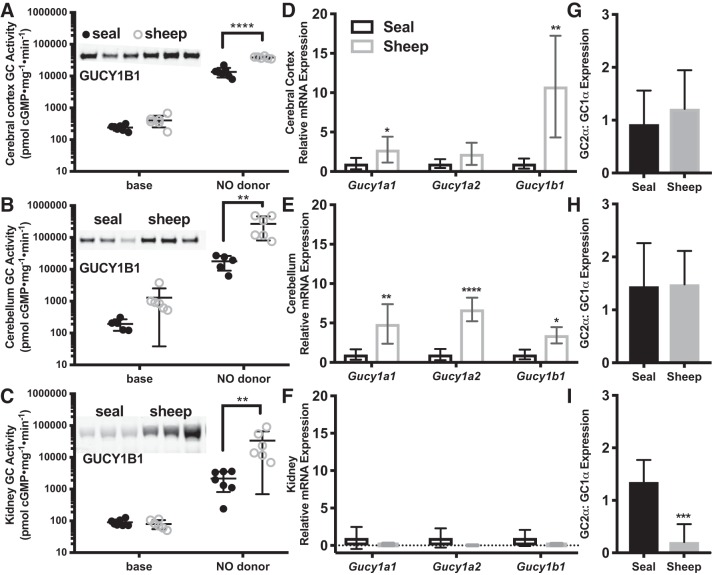Fig. 4.
Nitric oxide (NO)-stimulated guanylyl cyclase (GC) activity is higher in sheep brain (A: cerebral cortex, B: cerebellum) and kidney (C) than in Weddell seal (sheep: n = 6 each tissue; seal: n = 7 cerebral cortex and kidney, n = 5 cerebellum). Insets: Western blots of representative seal and sheep are presented for each tissue (A–C, 70-kDa band). mRNA expression of GC enzyme subunits (Gucy1a1, Gucy1b3, each normalized to 18S) were higher in brains of sheep than in seal (D: cerebral cortex, E: cerebellum) but were similar in kidney (F) between species (sheep: n = 4 brain, n = 5 kidney; seal: n = 6 brain, n = 5 kidney). After internal normalization to 18S within each sample, qPCR data are presented relative to seal values for each tissue. The ratio Gucy1a2/Gucy1a1 mRNA did not differ between species in the brain (G: cerebral cortex, H: cerebellum) but was higher in seal kidney compared with sheep (I). Because GC activity and gene expression were similar in seal adults and pups, data from adults and pups were combined for these analyses. Error bars represent means ± SD. Asterisks denote significant species differences with Sidak post hoc tests for NO-stimulated GC activity and relative mRNA expression and with t-tests for relative expression of A2:A1 (*P < 0.05, **P < 0.01, ***P < 0.001, ****P < 0.0001).

